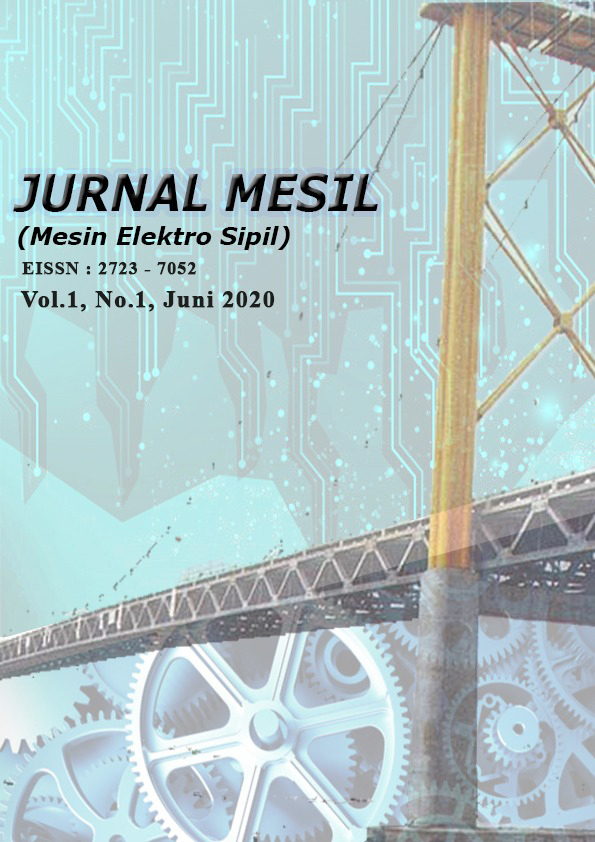Simulasi Laju Aliran Pengecoran Dalam Proses Pembuatan Blok Silinder Motor Bakar
DOI:
https://doi.org/10.53695/jm.v1i1.2Keywords:
Simulasi, Laju Aliran, CFDAbstract
Penelitian ini bertujuan untuk mengetahui pressure drop dengan kecepatan masuk (velocity). Proses pengecoran pembuatan blok silinder motor bakar dilakukan dengan cara menuang material yang telah di lelehkan ke dalam cetakan. Bahan pada cetakan menggunakan pasir silika atau material Carbon Dioxide, Fluida yang di gunakan dalam penelitian ini adalah alumunium cair. Dalam simulasi pengecoran menggunakan sebuah metode, yaitu metode Computational Fluid Dynamic (CFD) dengan menggunakan software Solidwork 2014. Hasil yang diperoleh dari pengolahan data disusun berbentuk Tabel dan Grafik. Grafik yang diamati terdiri antara pressure drop terhadap sumbu Z dengan Velocity yang sudah diasumsikan. Dari grafik yang di hasilkan diharap mampu memberikan hasil penuangan yang baik dalam nilai kecepatan.Downloads
References
M. T. Wijaya, Z. -, and W. -, “Pengaruh Variasi Temperatur Tuang Terhadap Ketangguhan Impak Dan Struktur Mikro Pada Pengecoran Aluminium,” Simetris J. Tek. Mesin, Elektro dan Ilmu Komput., vol. 8, no. 1, pp. 219–224, 2017, doi: 10.24176/simet.v8i1.933.
T. J. P. Tulungagung, R. Yuda, and C. Imron, “Simulasi Numerik Aliran Fluida pada Saluran,” vol. 5, no. 2, 2016.
N. A. El. Mahallawy, M. A. Taha, and M. Lofti Zamzam, “On the microstructure and mechanical properties of squeeze-cast Al-7 wt% Si alloy,” J. Mater. Process. Tech., vol. 40, no. 1–2, pp. 73–85, 1994, doi: 10.1016/0924-0136(94)90478-2.
B. Kusharjanta, W. P. Raharjo, and J. Santoso, “Pengaruh Bentuk Penampang Runner Terhadap CAcat Porositas Dan Nilai Kekerasan Produk Cor Aluminium Cetakan Pasir,” Mekanika, vol. 11, no. 1, pp. 41–44, 2012.
D. Jurusan, T. Mesin, and P. Negeri, “Analisis Parameter Proses Pengecoran Squeeze Terhadap Cacat Porositas Produk Flens Motor Sungai,” J. Tek. Mesin, vol. 4, no. 1, pp. 6-12–12, 2004, doi: 10.9744/jtm.4.1.pp.6-12.
P. Studi, T. Mesin, F. Teknik, U. Wahid, and H. Semarang, “PENGARUH PENGECORAN ULANG TERHADAP KEKUATAN TARIK DAN KEKERASAN PADA ALUMINIUM COR DENGAN CETAKAN PASIR Helmy Purwanto, Mulyonorejo.”
M. Mandala and E. S. Siradj, “STRUKTUR MIKRO DAN SIFAT MEKANIS ALUMINIUM (Al-Si) PADA PROSES PENGECORAN MENGGUNAKAN CETAKAN LOGAM, CETAKAN PASIR DAN CETAKAN,” vol. 14, no. November, pp. 88–98, 2016.
F. Hartono, “Analisis Computational Fluid Dynamic ( Cfd ) Ruang Bakar Mesin Turbojet Tje500Fh V . 1 ( Computational Fluid Dynamic Analysis of Turbojet,” vol. 1.
I. M. Astika, D. N. K. P. Negara, and M. A. Susantika, “Pengaruh Jenis Pasir Cetak dengan Zat Pengikat Bentonit Terhadap Sifat Permeabilitas dan Kekuatan Tekan Basah Cetakan Pasir ( Sand Casting ),” vol. 4, no. 2, pp. 132–138, 2010.
K. Syah, D. W. Karmiadji, and D. Rahmalina, “Desain Gating System dan Parameter Proses Pengecoran untuk Mengatasi Cacat Rongga Poros Engkol,” J. Teknol. Rekayasa, vol. 2, no. 1, p. 55, 2017, doi: 10.31544/jtera.v2.i1.2017.55-62.
Supriyanto, “Analisis Hasil Pengecoran Aluminium dengan Variasi Media Pendinginan,” Jana Tek., vol. 11, no. 2, pp. 117–125, 2009, doi: 10.1361/asmhba0003537.
S. M. B. Respati et al., “Pengaruh tekanan dan temperatur cetakan terhadap struktur mikro dan kekerasan hasil pengecoran pada material aluminium daur ulang,” 1998.
M. S. Ayar, V. S. Ayar, and P. M. George, “Simulation and experimental validation for defect reduction in geometry varied aluminium plates casted using sand casting,” Mater. Today Proc., no. xxxx, 2020, doi: 10.1016/j.matpr.2020.02.788.
S. Rem, M. Ketebalan, and P. L. N. V, “Jurnal Rekayasa Material , Manufaktur dan Energi FT-UMSU Jurnal Rekayasa Material , Manufaktur dan Energi FT-UMSU,” vol. 2, no. 1, pp. 44–53, 2019.
M. Ahsan and A. Hussain, “Computational fluid dynamics (CFD) simulation and comparison for different numbers of baffles to reduce concentration polarization effects in membrane tubes,” J. Eng. Technol. Sci., vol. 49, no. 1, pp. 115–132, 2017, doi: 10.5614/j.eng.technol.sci.2017.49.1.7.
Downloads
Published
How to Cite
Issue
Section
License
Copyright (c) 2020 JURNAL MESIL (MESIN ELEKTRO SIPIL)

This work is licensed under a Creative Commons Attribution-ShareAlike 4.0 International License.
This is an open-access journal. All works published under Creative Commons license CC-BY-SA which mean that all content is freely available at no charge to the user or his/her Institution. User are allowed to read, download, copy, write, improve, and create derivative creation even for other lawful purposes, this license permits anyone to, as long as they cite and license the derivative creation under similar terms

Jurnal Mesil (Mesin Elektro Sipil) is licensed under a Creative Commons Attribution-ShareAlike 4.0 International License.



